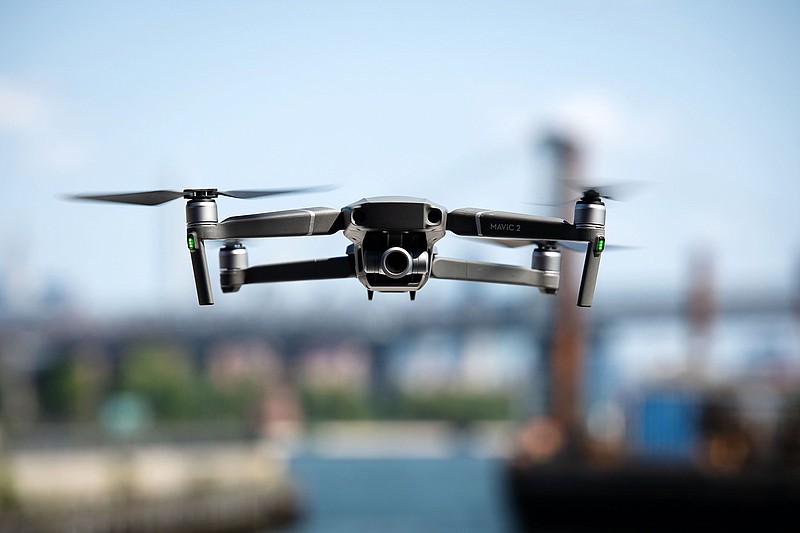Commercial drone use for deliveries and services is set to clear a major hurdle in the U.S. as soon as this week with new requirements that most of the devices transmit a radio beacon with a digital license plate to help ensure safety and prevent misuse.
All but the smallest drones will have to broadcast a radio signal identifying them and their location under new Federal Aviation Administration regulations, according to a summary of the action reviewed by Bloomberg News.
The regulations, which take effect 30 months after being finalized, are an important foundation required before drone deliveries and other commerce can occur. They mark the most significant regulatory expansion in drone capabilities since the devices first started trickling into civilian markets about a decade ago.
The rules will be "an essential building block toward safely allowing more complex" drone operations, the agency said in the summary.
The actions break a regulatory roadblock that had held up growth in pilotless aircraft technology in the U.S. Requiring an ID broadcast addresses concerns from federal law enforcement and homeland security agencies that the increasingly capable flying machines might be used for crime or terrorism.
Several years ago the FAA had been set to expand drone flights over crowds in some cases and to allow them routinely at night, but the other agencies wouldn't permit it to move ahead with the rules until it addressed growing concerns about misuse of the devices. Separate rules for operating over crowds are also expected soon.
The FAA hasn't commented on its plans for the new regulations. The White House's Office of Management and Budget concluded its review of the regulations Wednesday, according to its website.
It will still be years before swarms of drones operated by companies such as Amazon.com Inc.'s Prime Air, Alphabet Inc. offshoot Wing and United Parcel Service Inc. buzz over neighborhoods dropping off packages. But the new rules provide an important platform for the industry to move toward those goals.
The new regulations will require drones weighing more than 0.55 pounds to broadcast their identity on a low-power radio frequency such as Wi-Fi or Bluetooth. In that way, police or other authorities can monitor nearby drones.
Civilian drones offered for sale in the U.S. must be equipped with such technology starting 18 months after the rules are finalized, according to the summary. Operators aren't permitted to take off without a working ID beacon.
The regulations also allow for existing drones to be retrofitted with such a system.
The rules don't require that the devices broadcast on a signal that can be transmitted by mobile phone systems to a national tracking network, a measure originally included in a proposal unveiled last year.
Hobbyists who fly the devices can seek exemptions allowing them to operate without an ID beacon as long as they're flown in restricted areas approved by the FAA. Flying clubs such as the Academy of Model Aeronautics and educational institutions can apply for such exemptions.
The FAA, heeding requests from recreational users and industry groups, is adding privacy restrictions that will make it impossible for the public to identify the operator of a drone using the ID beacon.
The new rules are an attempt to address the explosion of drone use. The FAA had registered almost 1 million recreational drone users and they owned 1.3 million of the devices as of last year. An additional 385,000 commercial drones had been registered with the agency, according to its data.
At the same time, there's been a surge of reports of the devices flying dangerously near planes and helicopters -- even Air Force One -- and cases of them being used for drug smuggling or terrorist attacks in other nations.
